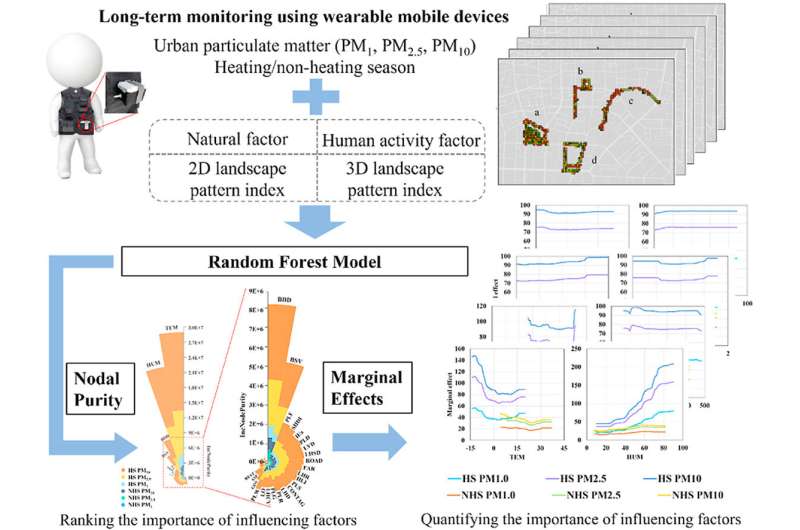Factors influencing seasonal and spatial patterns of airborne particulate matter concentration in northeast China

Particulate matter (PM), or atmospheric particulate matter, are microscopic particles of solid or liquid matter suspended in the air which adversely affect human health. Sources of urban particulate matter (UPM) can be natural or anthropogenic (e.g., industry and traffic). In north and northeast China, a major source of UPM is central residential heating in winter.
To explore seasonal pattern and influencing factors of UPM in Northeastern China, Dr. Li Chunlin from the Institute of Applied Ecology (IAE) of the Chinese Academy of Sciences, together with his colleagues, has conducted an investigation in Shenyang, an old industrial base in China, capital of Liaoning Province and high-end manufacturing base today.
From March 2019 to February 2020, the researchers creatively used wearable air pollution monitoring devices to collect UPM (PM1, PM2.5, and PM10) data in the built-up areas of Shenyang City.
The researchers found that central heating and the operation of boilers were key anthropogenic factors affecting seasonal pattern of UPM. When analyzing the spatial pattern of UPM in Shenyang City, the researchers found that temperature and humidity were the dominant natural factors influencing the diffusion of UPM, while the percentage of green land, a two-dimensional (2D) landscape pattern index, and the three-dimensional (3D) pattern of buildings had important effects on the transport and diffusion of UPM.
They also revealed the potential impacts of natural factors, human activities, 2D and 3D landscape pattern indices on the concentration distribution of airborne UPM in Shenyang. The central heating in winter determined the differences of UPM in the heating and non-heating seasons.
The study shows that the wearable pollutant monitoring/mapping system is a more "realistic" approach in evaluating the dynamic exposure risks of urban residents to UPM.
This study has been published in Environmental Research, titled "Natural and human factors influencing urban particulate matter concentrations in central heating areas with long-term wearable monitoring devices."
More information: Chuyi Zhang et al, Natural and human factors influencing urban particulate matter concentrations in central heating areas with long-term wearable monitoring devices, Environmental Research (2022). DOI: 10.1016/j.envres.2022.114393
Journal information: Environmental Research
Provided by Chinese Academy of Sciences



















